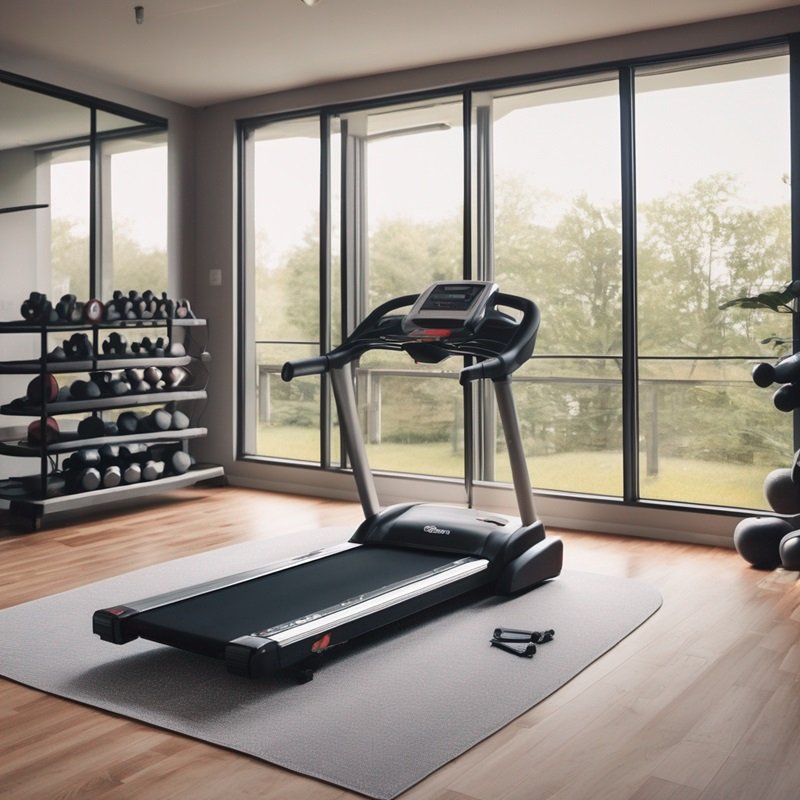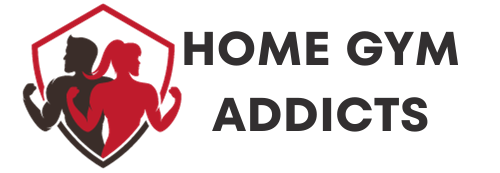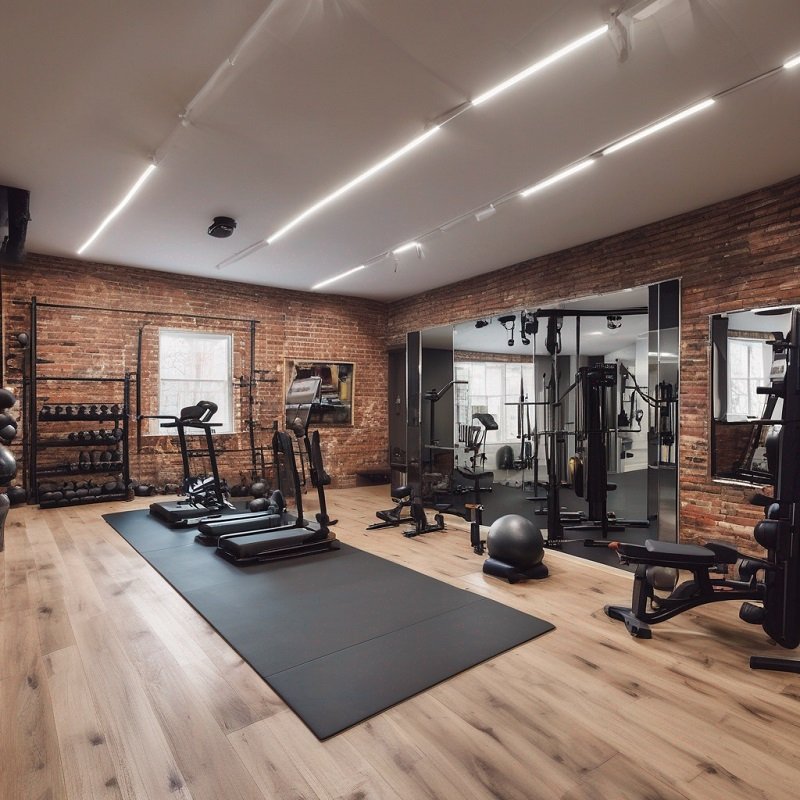
Blast Calories without Leaving Your Bedroom with a Genius Second-Floor Gym
Are you dreaming of creating your own home gym but unsure if it’s safe to put it on the second floor? Wonder no more! In this article, we will explore the weight considerations, structural integrity assessment, flooring options, noise and vibration control, and safety measures needed to ensure a secure and masterful home gym on your second floor. Get ready to transform your space into the ultimate fitness oasis!
Key Takeaways
- Assess the weight of equipment and consider the structural capacity of the second floor before setting up a home gym.
- Consult a structural engineer to evaluate the floor’s load-bearing capacity and reinforce it if necessary.
- Use appropriate flooring options such as rubber flooring or interlocking foam mats to protect the floor and provide durability and shock absorption.
- Take measures to control noise and vibrations by using high-quality rubber mats, soundproofing materials, and padding under heavy equipment.

Weight Considerations
You should regularly assess the weight of the equipment you plan to include in your home gym on the second floor. It is crucial to consider the structural capacity of your second floor to ensure it can support the weight without compromising its integrity. Remember, a home gym typically consists of heavy equipment such as treadmills, weight benches, and squat racks, all of which can add up to significant weight. To determine if your second floor can handle the load, consult a structural engineer who can assess the floor’s load-bearing capacity and provide recommendations. Additionally, consider distributing the weight evenly throughout the space and reinforcing the floor if necessary. By taking these precautions, you can confidently assemble your home gym and enjoy your workouts without worry.
Structural Integrity Assessment
To ensure the safety of your home gym on the second floor, it is essential to conduct a thorough assessment of the structural integrity. This assessment will help determine if your floor can support the weight of gym equipment and the additional stress it may impose. Here is a table to guide you in evaluating your floor’s structural capacity:
| Structural Component | Considerations |
|---|---|
| Floor joists | Check for signs of sagging or cracking. Ensure they are properly sized and spaced. |
| Load-bearing walls | Assess their condition and ensure they can bear the added weight. |
| Foundation | Inspect for any signs of settlement or cracks that may compromise the stability of the entire structure. |
Flooring Options and Protection
Now that you have assessed the structural integrity, it’s time to explore flooring options and protection for your home gym on the second floor. To ensure the safety of your home gym and minimize potential damage to your floor, consider the following options:
- Rubber flooring: This durable and shock-absorbent material is ideal for home gyms as it provides protection against heavy weights and equipment. Look for rubber flooring tiles or rolls that are easy to install and maintain.
- Interlocking foam mats: These lightweight and cushioned mats are great for protecting your floor from impact while providing a comfortable workout surface. They are easy to install and can be easily removed or replaced if needed.
- Carpet tiles: If you prefer a softer surface, carpet tiles can be a good option. Choose ones that are specifically designed for high-traffic areas and can withstand the weight and movement of gym equipment.
- Floor protection mats: Place heavy-duty mats or protective sheets underneath your gym equipment to prevent any damage to your floor. These mats can also help reduce noise and vibrations.
Noise and Vibration Control
Minimizing noise and vibrations is crucial when setting up a home gym on the second floor. To ensure a peaceful environment and prevent disturbance to others in your household, there are several noise and vibration control measures you can implement.
One effective way to reduce noise and vibrations is by using high-quality rubber mats or flooring materials that provide cushioning and absorb impact. Additionally, placing a thick layer of foam or rubber padding underneath heavy equipment can further minimize vibrations. Another option is to install soundproofing materials on the walls and ceiling of the gym area, such as acoustic panels or insulation.
Safety Measures and Equipment Placement
Ensure proper safety measures and equipment placement when setting up your home gym on the second floor. Here are some essential steps to consider:
- Evaluate the structural integrity of the floor: Consult with a professional to ensure the floor can support the weight of your equipment and the additional stress of your workouts.
- Use appropriate flooring: Install high-quality rubber or foam flooring to absorb impact and reduce noise and vibrations. This will protect both your equipment and the floor beneath.
- Secure heavy equipment: Anchor larger machines or equipment to the floor or walls to prevent them from toppling over during intense workouts.
- Organize and declutter: Keep the area clear of any obstacles or clutter that could pose a safety hazard or interfere with your movements during exercise.
So there you have it, folks! With careful planning and consideration, you can definitely have a home gym on your second floor. Imagine the convenience of getting in a workout just steps away from your living space. With sturdy flooring, proper weight distribution, and noise control, your fitness haven will be both safe and enjoyable. So go ahead, turn that spare room into a personal gym and let your fitness journey take flight!

